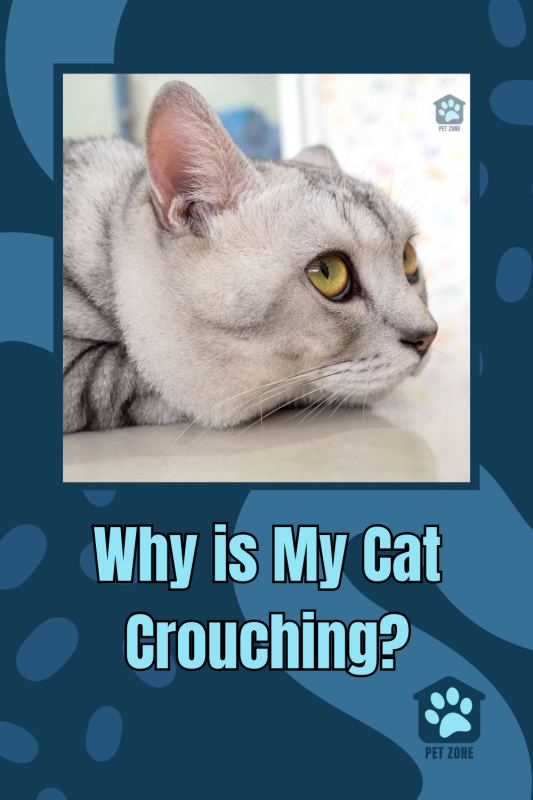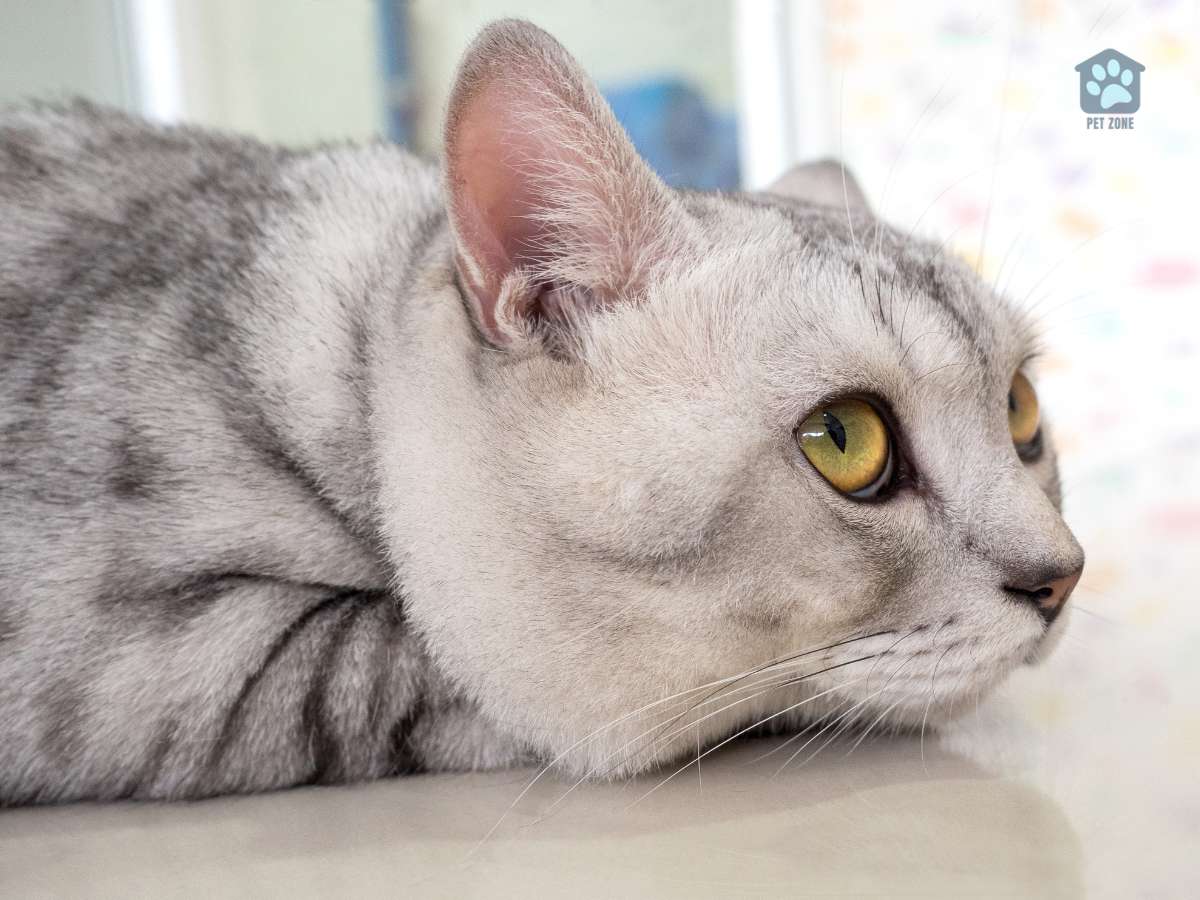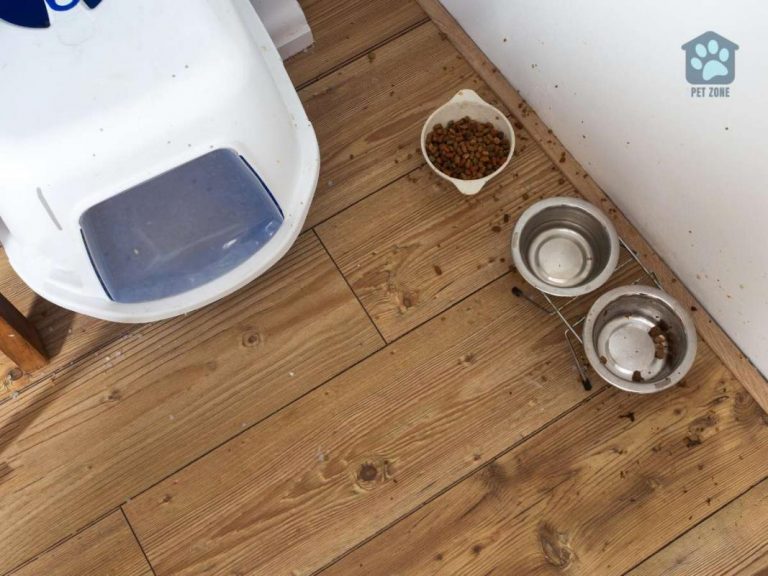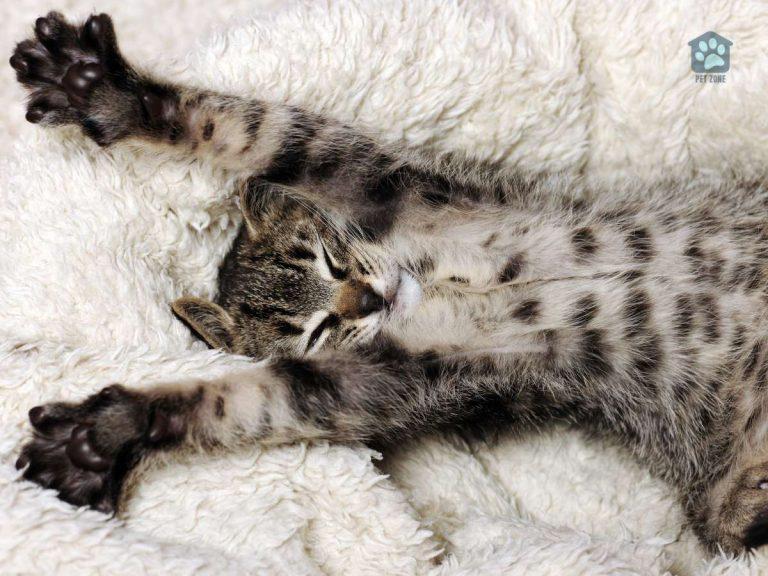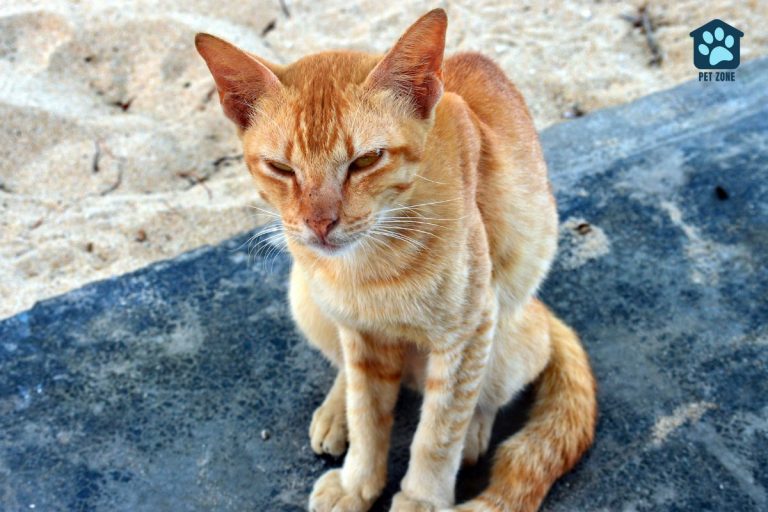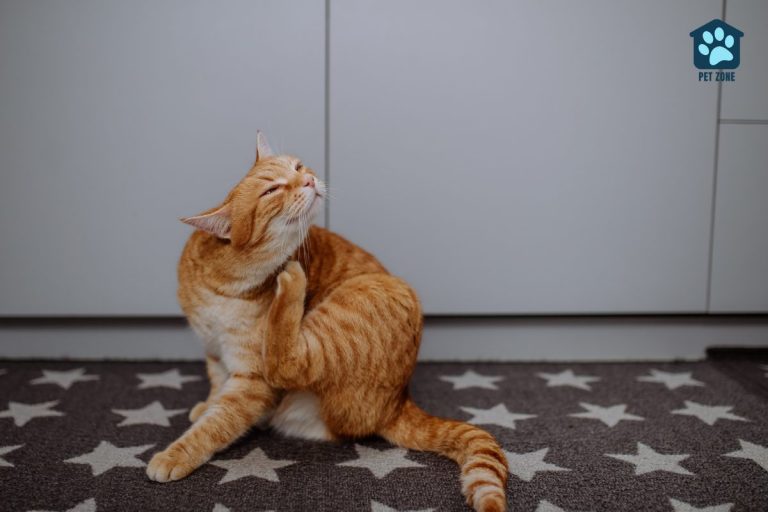Estimated reading time: 9 minutes
Understanding Feline Body Language
Cats have a unique way of communicating through their body language. Their crouching posture can indicate a range of emotions and reactions. When a cat crouches, their body posture changes. You may see her tail tucked, her ears may be back, and she may avoid eye contact.
Dilated pupils, cat coils and creeps, and facial expressions can also convey important information about your cat’s emotional state. For example, a crouching cat with dilated pupils may be feeling anxious or scared. A cat with lowered ears and avoiding eye contact might be trying to avoid conflict or submission.
Fear, Anxiety, or Stress
If your cat is crouching low to the ground, it may indicate anxiety, fear or stress. Cats may adopt this posture as a response to a perceived threat or if they are experiencing pain. When in fight or flight mode, cats may crouch as a defensive mechanism to protect themselves. Thus, it’s essential to look for other signs of distress, such as dilated pupils, vocalization, or unusual behavior to understand your cat’s emotional state.
Understanding the underlying cause of your cat’s fear, anxiety, or stress can help alleviate their distress. If you suspect your cat is in pain, it’s essential to seek veterinary attention. A veterinarian can assess your cat’s overall health and provide appropriate treatment if needed. By addressing the underlying condition, you can help your cat feel more comfortable and relaxed.
Territorial Behavior and Aggression
Cats crouch to display territorial behavior or aggression. Cat crouching behavior when encountering another, especially a female cat walking low to the ground, could indicate a territorial dispute or that she is preparing an attack, ready to pounce.
Understanding Another Cat’s Body Language
When another cat is approaching, you might see your cat’s ears are flat, her body tense, and her tail twitching. These are all signs of aggression, which could escalate into a physical altercation if not intervened upon.
As a pet owner, it’s essential to recognize these signals and provide a safe and stress-free environment for your cat. Introducing cats slowly and carefully can help them acclimate to each other and avoid territorial disputes. If the behavior persists or escalates, seek advice from a veterinarian or a professional animal behaviorist.
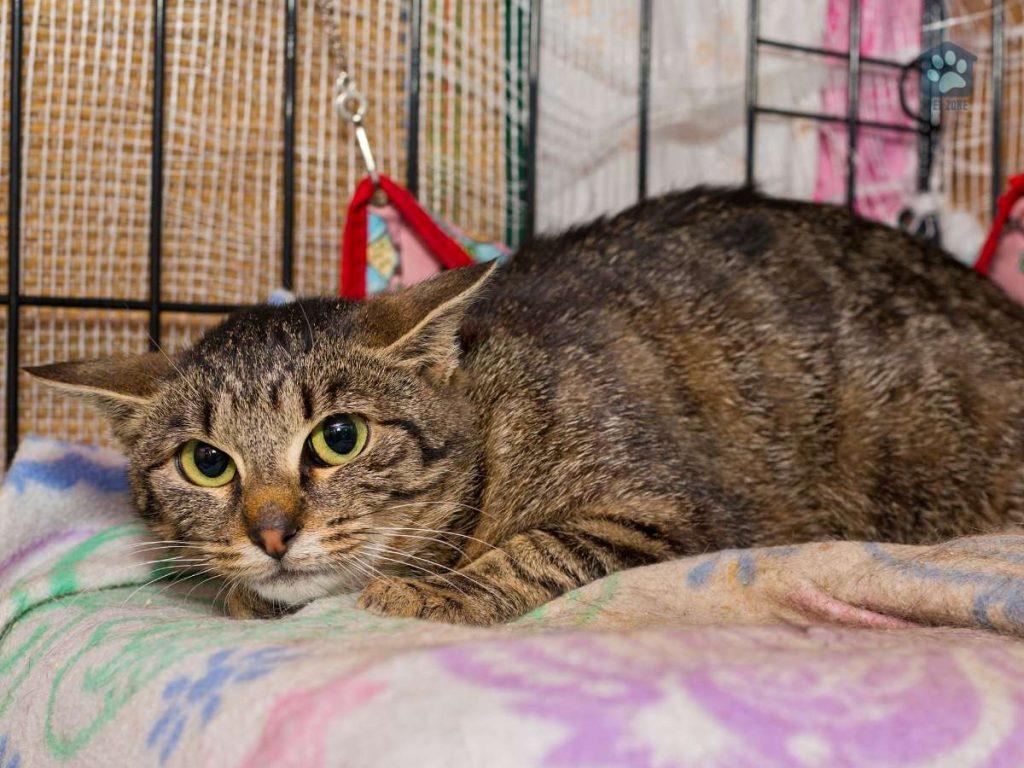
Emotional State and Relaxation
When a cat is crouching, it can also be a sign of their emotional state and a way for them to seek relaxation. They may purr or meow while in this position, which indicates contentment or a desire for attention. If your cat is feeling stressed or anxious, crouching can help them feel safe and secure.
To encourage your cat to relax, create a comfortable environment with their favorite toys, soft bedding, and a cozy spot to rest. Providing regular playtime and affectionate attention can also help your cat to feel more relaxed and at ease.
Understanding your cat’s body language and behavior can help you to identify when they need relaxation and how to provide it. Remember, cats have unique personalities, so what might work for one cat may not for another.
Pain or Medical Issues
Crouching can indicate that your cat is experiencing pain or dealing with an underlying medical issue. If you notice your cat crouching accompanied by dilated pupils, vocalization, or other unusual behavior, it’s important to consult a veterinary professional.
Your cat’s body language can provide important clues about their well-being. For instance, if your cat’s ears are back, and they are avoiding eye contact, it may mean that they are experiencing pain or discomfort. Vocalization, such as meowing or howling, may also signal distress.
If you suspect that your cat is in pain or distress, it’s crucial to seek veterinary care promptly. Your veterinarian can assess your cat’s overall health and recommend appropriate treatment.
Feline Play Behavior
Cats are natural predators, and they love to engage in play behavior. One way they do this is by crouching low to the ground before pouncing. This behavior is similar to stalking prey in the wild and is a sign that your cat is in a playful mood.
During playtime, your cat may use their paws to bat at toys or other objects. They may also engage in interactive play with other cats, using a crouching position to prepare for pouncing.
Providing stimulating playtime is essential for your cat’s physical and mental health. Interactive toys and play sessions can help your cat release energy and reduce stress. Encouraging playtime also allows you to bond with your feline friend and build trust.
Environmental Factors
Cats are creatures of habit and may become disoriented when changes are made in their environment. If you notice your cat crouching low to the ground, it could be a sign that they are trying to familiarize themselves with new objects or furniture that you have recently introduced.
Additionally, if your cat is walking low to the ground and crouching behavior is accompanied by signs of stress or anxiety, such as dilated pupils or ears back, it’s important to consider any recent environmental changes that could be causing these reactions.
By allowing your cat to adjust to these changes at their own pace and providing reassurance and comfort, you can help alleviate any stress or anxiety your cat may be experiencing.
Socialization and Communication
Cats are known for their subtle body language and nonverbal communication. Ears back, avoiding eye contact, and crouching low to the ground are all signs of cat behavior that can indicate submission or a desire to avoid conflict. If your cat is crouching and displaying these behaviors, it’s important to understand what they are trying to communicate.
Ears Back
When a cat’s ears are flattened against their head, it usually means they are feeling defensive or scared. This could be a response to a perceived threat, or a way to show submission to a more dominant cat or human. If your cat is crouching with their ears back, it’s important to approach them calmly and avoid any sudden movements that could escalate their anxiety.
Avoiding Eye Contact
Cats use eye contact to establish dominance or communicate aggression, so avoiding eye contact can be a sign of submission or an attempt to defuse a potentially aggressive situation. If you notice your cat crouching and avoiding eye contact, try to approach them from the side rather than head-on, and allow them to approach you on their own terms.
When to Seek Veterinary Care
If your cat is crouching and you suspect she may be experiencing pain or distress, it’s essential to seek veterinary care. A crouching cat may be a cat in pain or dealing with an underlying medical issue. Look for signs in your cat’s body language and behavior; persistent crouching accompanied by signs of discomfort, such as vocalization, dilated pupils, or unusual postures, warrants a visit to the veterinarian.
A professional can assess your cat’s overall health and provide appropriate pet care, which may include pain management or addressing an underlying medical issue. Don’t wait to seek veterinary care; prompt attention can help alleviate your cat’s discomfort and prevent more serious health problems from developing.
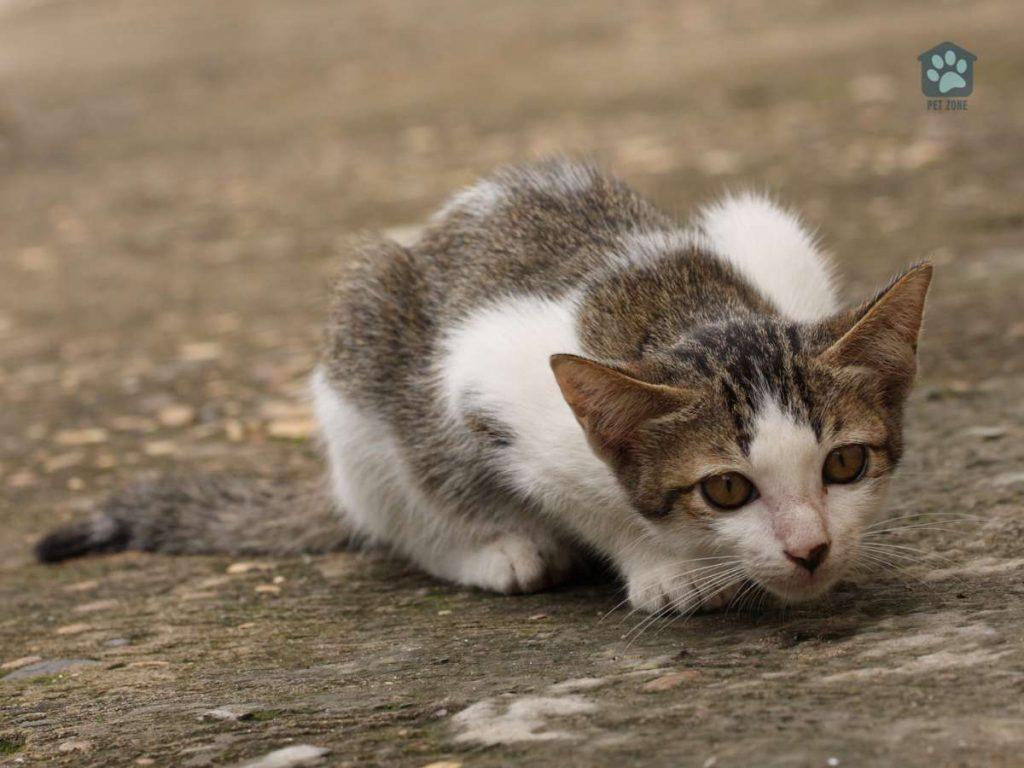
Conclusion
Crouching is a common behavior in cats, and it can convey several different meanings depending on the context. By paying attention to your cat’s body language, you can gain insight into their emotional state and better understand their needs. It’s essential to consider various factors, such as the environment and social cues when interpreting your cat’s crouching behavior.
Please feel free to share your thoughts and experiences in the comments below. If you found this article helpful, don’t hesitate to share it with fellow cat owners who might also be curious about their furry friend’s behavior!
FAQ
Q: How can I understand my cat’s body language?
A: Cats communicate through their body language, including crouching. Pay attention to their body posture, facial expressions, and other cues to gain insight into what your cat is feeling.
Q: What does it mean when my cat crouches low to the ground?
A: Crouching may indicate fear, anxiety, or stress in cats. It may be a response to a perceived threat or discomfort.
Q: Why does my cat crouch when encountering another cat?
A: Cats crouch close to the ground to display territorial behavior or aggression. If your cat crouches when encountering another cat, especially a female cat walking low to the ground, it could indicate a territorial dispute or an impending aggressive interaction.
Q: Do cats crouch when they are relaxed?
A: Yes, cats may crouch as a way to express their emotional state and seek relaxation. They may purr or meow while in a crouched position, which can be a sign of contentment or a desire for attention.
Q: Could crouching be a sign of pain or medical issues?
A: Yes, crouching can be a sign that your cat is experiencing pain or dealing with an underlying medical issue. If you notice your cat crouching accompanied by dilated pupils, vocalization, or other unusual behavior, it’s important to consult a veterinarian.
Q: Why do cats crouch during play?
A: Cats often crouch as part of their play behavior. It allows them to adopt a pouncing position, ready for action, and engage in interactive play with toys or other cats.
Q: Are there any environmental factors that can cause crouching behavior?
A: Yes, cats may crouch low to the ground due to environmental factors. For instance, if you have recently rearranged furniture or introduced new objects in their space, your cat might crouch as a way to navigate and familiarize themselves with the changes.
Q: What does it mean when a cat crouches with ears back and avoids eye contact?
A: Cats may crouch, with ears back and avoiding eye contact, as a form of socialization and communication. She is probably showing submissiveness or a desire to avoid conflict.
Q: When should I seek veterinary care for my cat’s crouching behavior?
A: If your cat’s crouching behavior is persistent, accompanied by signs of pain or distress, or if you are unsure about the underlying cause, it’s essential to seek veterinary care. A professional can assess your cat’s overall health and provide appropriate treatment if necessary.
Q: What should I keep in mind about crouching behavior in cats?
A: Crouching is a common behavior in cats and can have various meanings depending on the context. By observing your cat’s body language, considering their environment, and seeking veterinary advice if needed, you can better understand and support your cat’s well-being.
As an Amazon Associate I earn from qualifying purchases.
